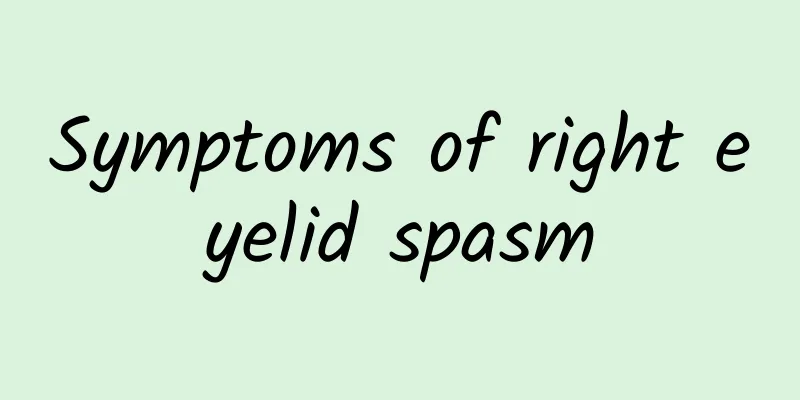Symptoms of right eyelid spasm

|
If the right eyelid spasms, or twitches, this may be caused by blepharospasm, which is an unexplained twitching and spasm of the muscles innervated by the facial nerve. It often occurs in middle-aged and elderly people and is a neurological disease. If it is serious, it will cause great mental and physical pain, and involuntary twitching will often occur. Symptoms of right eyelid spasm 1. Early symptoms of hemifacial spasm In the early stages of hemifacial spasm, active facial movements such as chewing, blinking, or facial expressions can induce facial muscle twitching, which can be aggravated by emotional excitement, tension, fatigue, or reading for too long. Symptoms are alleviated when resting or when the mood is stable. In severe cases, the patient may convulse all day long, even during sleep. In some patients, the forced contraction of the eyelids may cause the palpebral fissure to become smaller. In some patients, the facial muscles may even contract rigidly, causing the corner of the mouth to continue to tilt toward the affected side. The disease is a chronic process that can last a lifetime, and has a great impact on the patient's life, work, spirit and psychology. Very few patients with hemifacial spasm may suffer from trigeminal neuralgia, and a smaller number of patients may also have tinnitus, vertigo, hearing loss, etc. on the affected side. It is extremely rare for bilateral facial spasm to occur at the same time. 2. Late symptoms of hemifacial spasm Half of the face is spasmodic and the eyes cannot be opened, which can cause symptoms such as facial pain, headache, and tinnitus. Because eyelid twitching can easily attract people's attention. The eyelids twitch first, then slowly move down until the corners of the mouth begin to twitch. When the twitching is severe, there is also dizziness. The frequent twitching seriously affects daily life, and even mild facial paralysis occurs. Twitching often occurs in the upper eyelid and sometimes in the lower eyelid, and is not controlled by a person's thinking or consciousness. It can be divided into physiological and pathological types. The former usually passes quickly and sometimes lasts for a few days; while the latter is more serious and develops progressively. It develops from simple upper or lower eyelid twitching to upper and lower eyelid twitching, and even to involuntary twitching of the facial muscles on the same side. The most common cause is compression and stimulation of the facial nerve root by abnormal blood vessels running inside the skull, which accounts for 99% of hemifacial spasm. Another 1% is stimulation of the facial nerve by intracranial tumors or arachnoid adhesions. |
<<: Things to note when having double eyelid surgery
>>: How long does it take to recover from double eyelid surgery?
Recommend
What are the symptoms of earwax infection?
The ear is the most important organ of the human ...
Preventive measures for rabies
Nowadays, as people's living conditions allow...
There is white stuff on my nipples when I take a shower
It is normal for white substances to flow out of ...
What are the effects of drinking Cistanche deserticola in water?
Nowadays, more and more people pay attention to h...
The difference between Rendan and Rendan
Ren Dan is a traditional Chinese medicine with re...
What to do if your baby's nose is always blocked
If your baby has a stuffy nose, there are many re...
What is the cause of chronic myeloid leukemia
The occurrence of chronic myeloid leukemia requir...
Can pregnant women eat coriander? What are the nutritional values of coriander?
Coriander can ward off all unhealthy qi, help dig...
What are the effects, functions and contraindications of safflower?
Safflower is a very ancient Chinese medicinal mat...
What is the reason for the swelling in the right eye?
When certain organs of the body become diseased, ...
Can people with gastric ulcer eat seafood? A light diet is the most important
Everyone likes to eat seafood, but it is not suit...
What causes foot pain?
Feet are very important to us humans. We usually ...
Shelf life of Chinese medicine liquid
In fact, many people choose traditional Chinese m...
36 weeks pregnant belly feeling
After a pregnant woman enters the late stage of p...
Get rid of pain and trouble with Chinese medicine massage secrets revealed
What should you do if you have headaches, neck pa...









